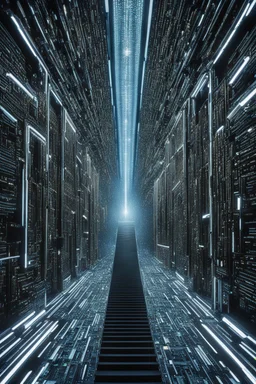

@generalpha
Prompt
This drawing uses a one-point perspective, meaning that the objects' faces parallel the viewer and converge at a single vanishing point on the horizon line. Do it. It's simpler than you think - just pay attention to the 20-step guide and, if needed, watch the video below. Begin by lightly drawing a horizontal line in the middle of your paper. It will be the base of the tower and should be about six inches long if using a 12-inch sketchbook; Divide this line into thirds and lightly make small m
statue, doubles, twins, entangled fingers, Worst Quality, ugly, ugly face, watermarks, undetailed, unrealistic, double limbs, worst hands, worst body, Disfigured, double, twin, dialog, book, multiple fingers, deformed, deformity, ugliness, poorly drawn face, extra_limb, extra limbs, bad hands, wrong hands, poorly drawn hands, messy drawing, cropped head, bad anatomy, lowres, extra digit, fewer digit, worst quality, low quality, jpeg artifacts, watermark, missing fingers, cropped, poorly drawn
1 year ago
Model
SSD-1B
Guidance Scale
7
Dimensions
1024 × 1024



![[a pen sketch with a lot of strokes in stippling] a man in a library surrounded by](https://img.stablecog.com/insecure/256w/aHR0cHM6Ly9iLnN0YWJsZWNvZy5jb20vMDhlMTM4NjctOGM0NC00ZTBmLTg4ODktMGNiZmVjNWU2NjA1LmpwZWc.webp)

![[mahematics] In the context of universal approximation, two approaches can achieve similar results but with different parameter requirements. The overall system comprises data, architecture, and a loss function, interconnected by a learning procedure. Responsibilities within the system include acknowledging noisy or biased data, addressing the need for a large number of parameters in the architecture, and overcoming the principal-agent problem in the choice of the loss function.](https://img.stablecog.com/insecure/256w/aHR0cHM6Ly9iLnN0YWJsZWNvZy5jb20vNzE2NTdhMmYtNWI1Ny00MGM5LWFmMzgtODIxNTNjNDA5NmJiLmpwZWc.webp)
![digital echoes and virtual realms, Juliette and Romeo's fateful connection transcends the boundaries of a high-tech electronic universe. Juliette, lost in sorrow, weeps in a holographic simulation as Romeo's lifeless avatar rests upon a glowing data tomb, their love immortalized in lines of code. [William S. Burroughs' "The Electronic Revolution"] The curse woven into their digital DNA dictates that Juliette, in her grief, will unknowingly trigger a fatal algorithm, linking her fate to Romeo i](https://img.stablecog.com/insecure/256w/aHR0cHM6Ly9iLnN0YWJsZWNvZy5jb20vNWE0ZmY0NTktYmFlNi00NWYzLWIwMjItOTM2NzgzZGM4OGVmLmpwZWc.webp)




